Variations in sub-lethal injuries to manta rays in the Maldives
2020
Elspeth Strike (MSc Marine Environmental Management - University of York)
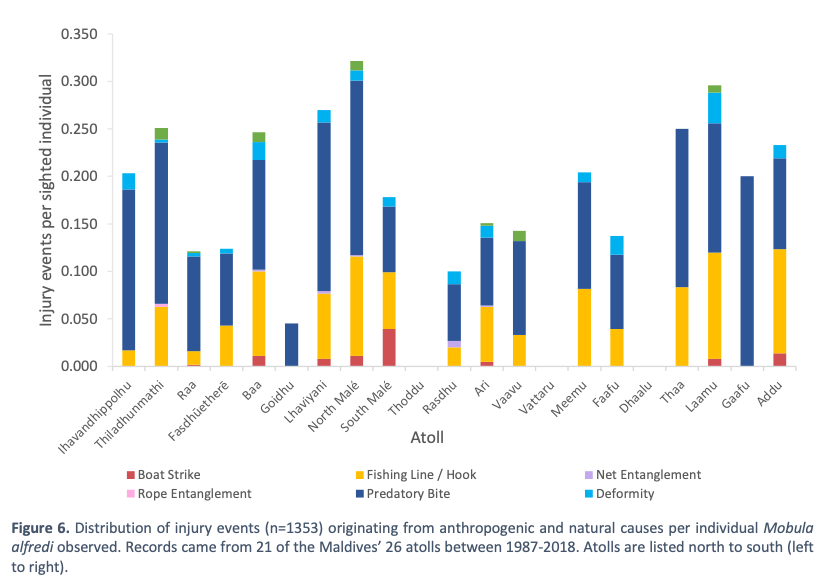
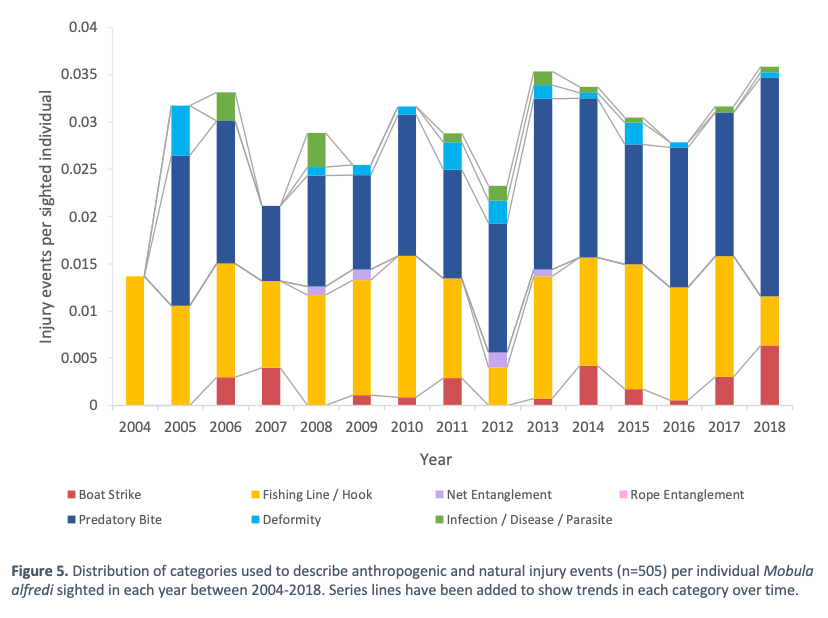
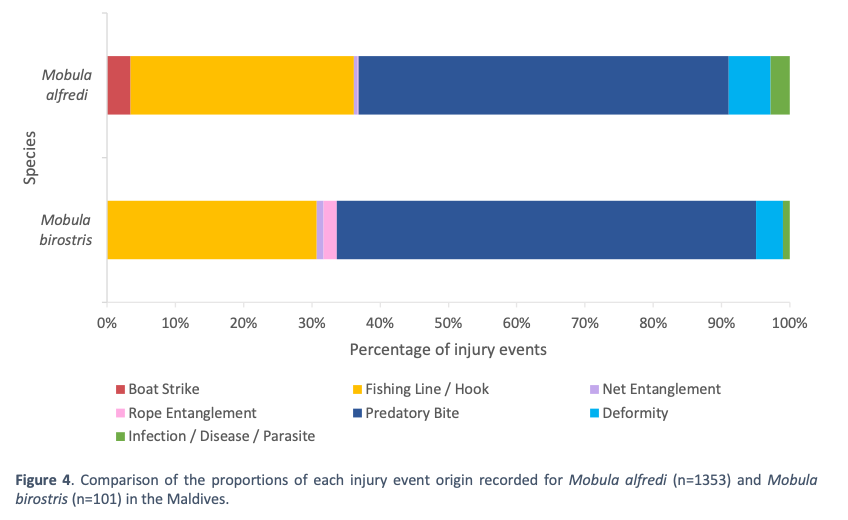
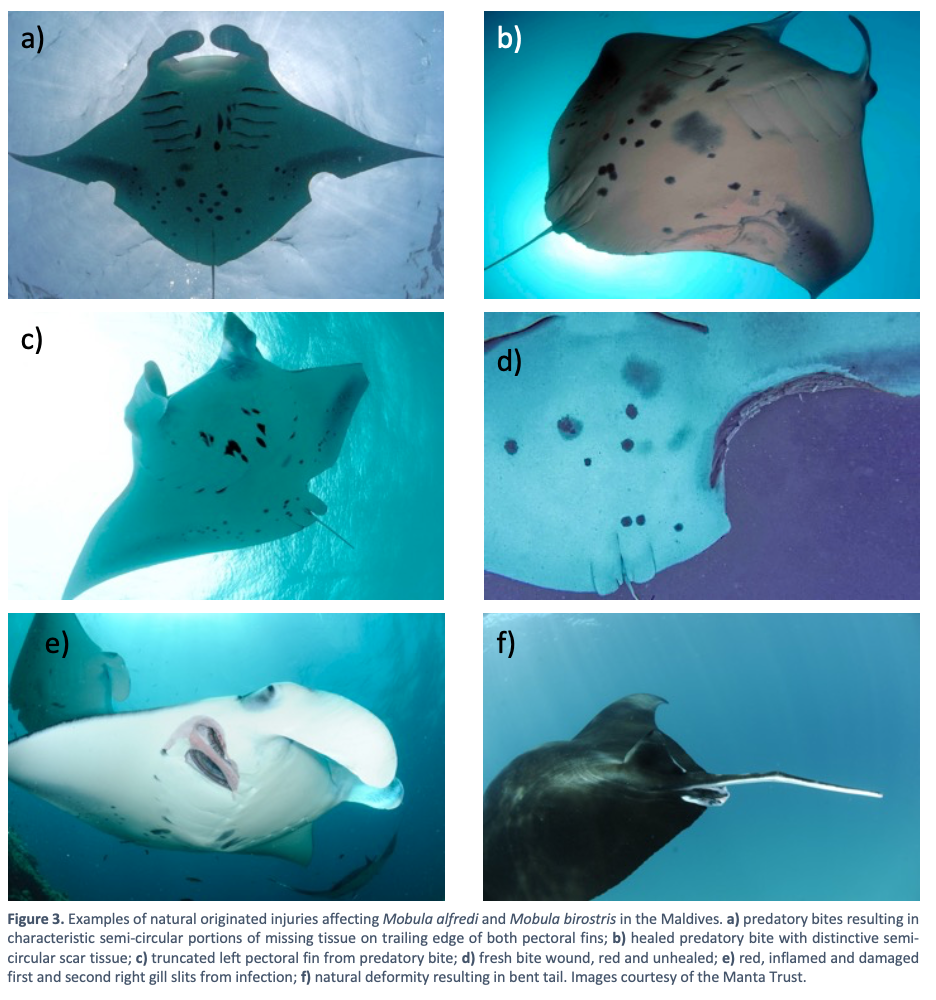
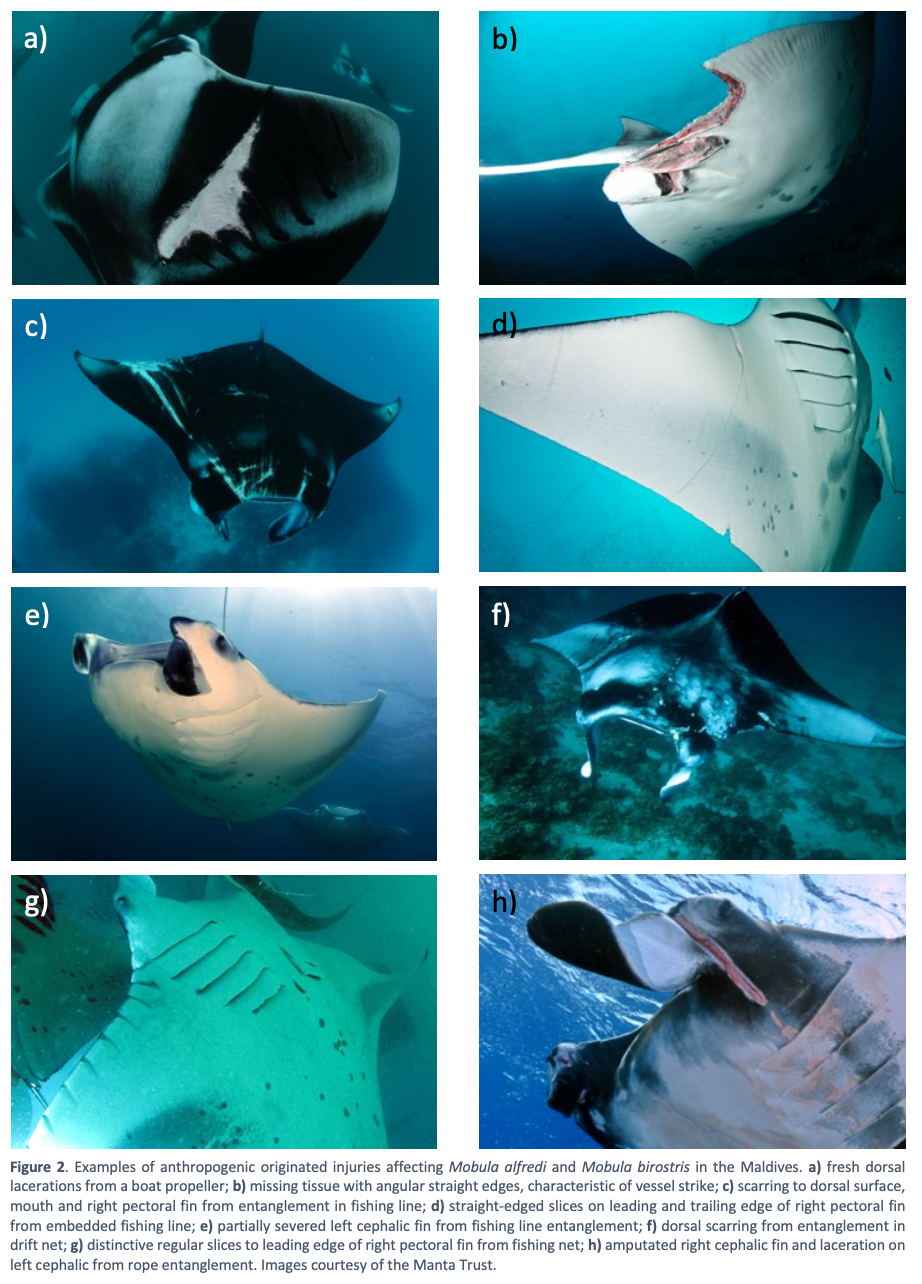
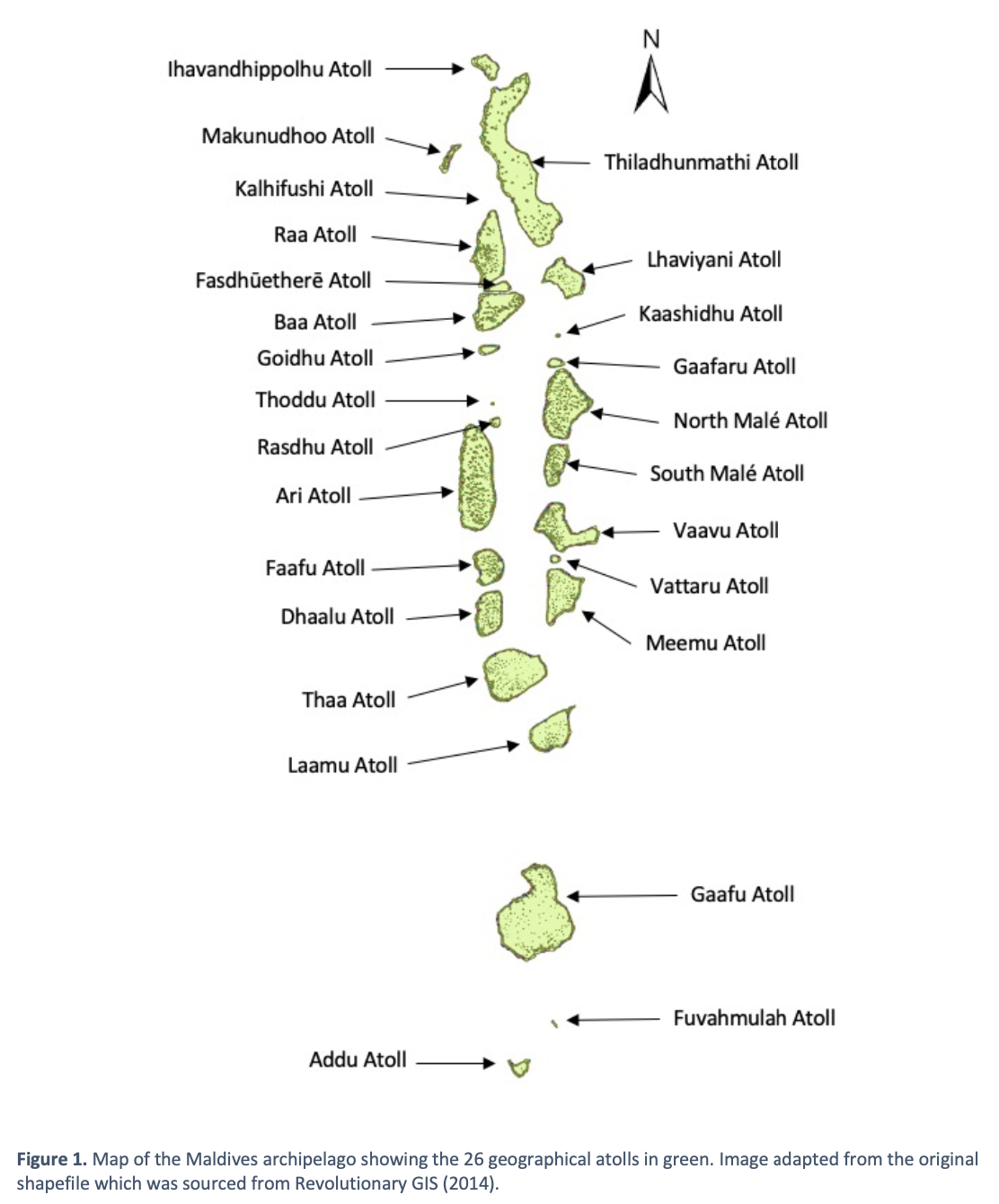
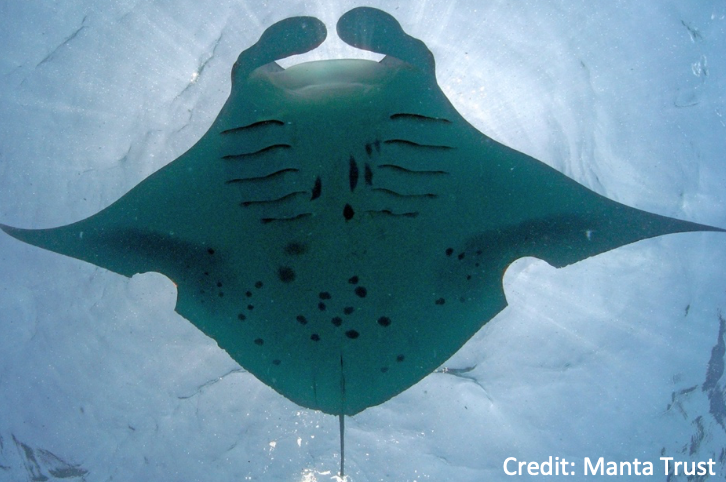
Summary: This study focused on sub-lethal injuries in Manta rays, specifically reef (Mobula alfredi) and oceanic (Mobula birostris) manta rays, in the Maldives. This study analysed a database containing over 65,000 sightings from 1987 to 2020. It was found that M. alfredi had a higher rate of injuries than M. birostris, with 26% of the population affected compared to 15%. Predation was identified as the primary cause of injuries in both species, rather than human activities. However, the study highlighted specific atolls where anthropogenic injuries were more prevalent, namely North Malé, Laamu, Addu, Baa, and South Malé. This research contributes to understanding the threats to Manta rays and can inform conservation efforts in the region.
Abstract
“Sub-lethal injuries to manta rays have rarely been studied in detail, yet populations have become increasingly affected by human activities. Maldivian manta rays are not directly exploited by fisheries but are known to sustain injuries from entanglement in fishing lines and boat strikes. To examine the frequency of sub-lethal injury events affecting Mobula alfredi and Mobula birostris from anthropogenic and natural origins, I analysed data from the Manta Trust’s Maldivian Manta Ray Project (MMRP) database which contains almost 65,000 photo- identification sightings of the two species from 1987-2020. From this I calculated the rate of injury accumulation in M. alfredi and how injury event frequencies and origins varied for this species and M. birostris. Significantly more M. alfredi individuals were injured than M. birostris, with 26% of the population affected as opposed to 15% (χ2 (1) = 41.9, p < .001). In both species, injuries were more likely to have been caused by predation than anthropogenic impacts. Although adult M. alfredi sustained more injury events than young rays (χ2 (1) = 30.2, p < .001), the latter accumulated them at a higher rate (W = 12082, p < .001, r = -0.25). Atolls with the highest number of anthropogenic injury events per sighted M. alfredi were North Malé, Laamu, Addu, Baa and South Malé. Overall, this work will contribute to a growing understanding of the threats faced by manta rays in the Maldives, which will, in turn, highlight areas where management should be improved to protect them.”
Author Affiliations
University of York
The Manta Trust
Maldives Manta Conservation Programme
